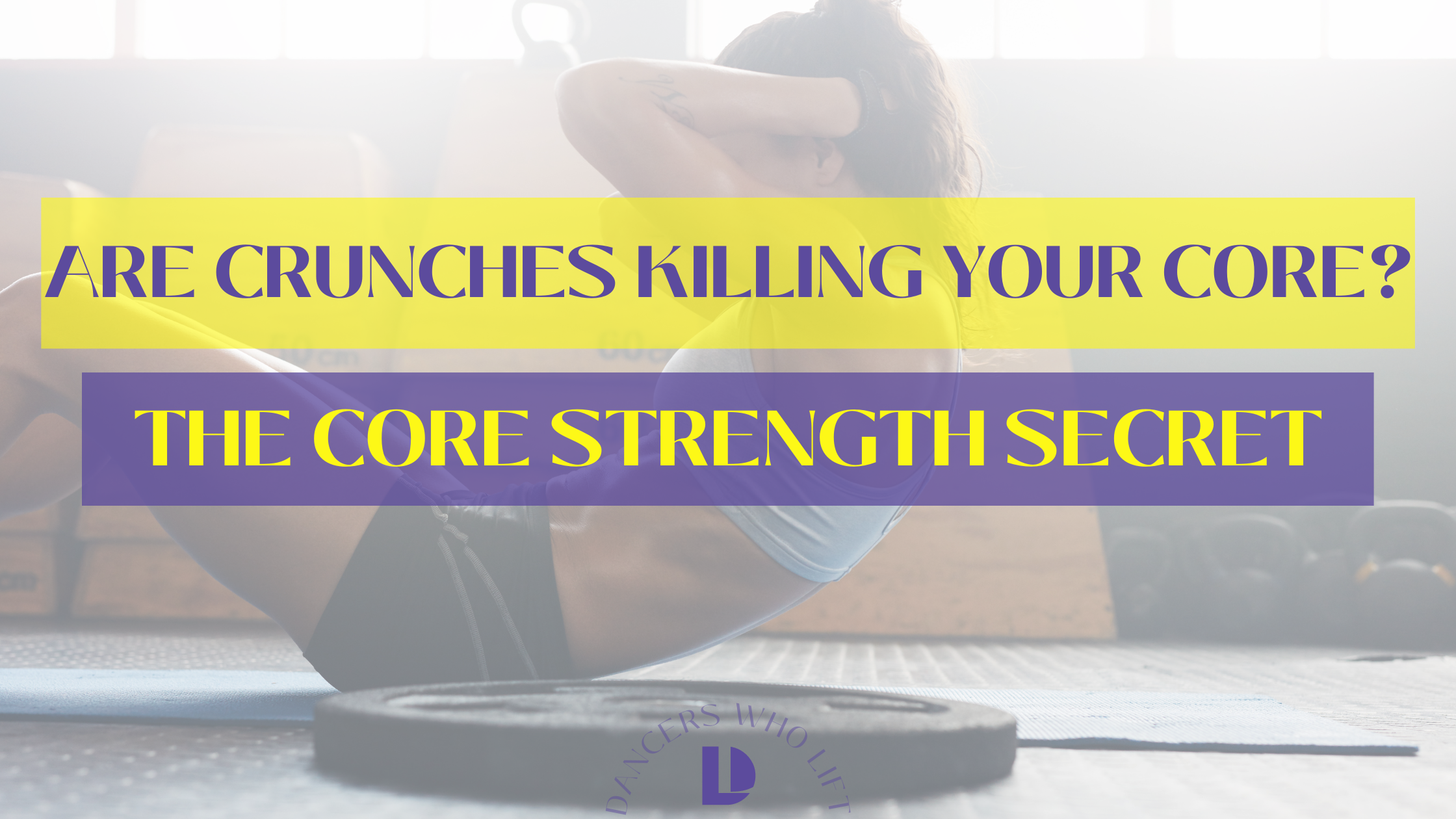“Okay class, let’s warm up! Everyone on your backs!”
You hear your dance instructor command and, like an army, everyone assumes the position: Knees bent, feet flat, hands behind the head.
It doesn’t *really* matter the song, you can guess the core strength combination.
8 crunches with your feet flat.
8 crunches with your knees bent, but feet in the air.
8 crunches with one leg on the floor, one leg straight in the air.
8 more, but on the other leg.
Ope, 8 crunches with both legs straight up to the ceiling.
And… crunches in a straddle position.
Roll to your right side… crunch, crunch, crunch…
Roll to your left side… crunch, crunch, crunch…
And now you’re halfway through the song which means you get to start the sequence from the beginning.
Except now your abs are starting to burn… and your hip flexors are starting to tighten up… and your neck is beginning to ache…
The range of motion with each crunch diminishes… the pain increases.
But it’s good right? The ‘burn’ means your core is getting engaged and when you stand up, you’ll be on your center and ready to dance.
Right?..
Well, probably not.
Here’s the problem:
Crunches have long been considered a staple exercise for core strength. However, for dancers, this may not be the case. While a strong core is undoubtedly essential for dance performance, relying solely on crunches to develop it may not be the best approach. In this blog post, we will explore why crunches may not be beneficial for dancers as a core strengthening exercise.
First:
Crunches primarily target the rectus abdominis muscle, commonly known as the six-pack muscle. While this muscle is undoubtedly essential for a core strength, dancers require a more well-rounded approach to core training.
Dance movements require dynamic stability, which involves the activation of multiple muscle groups, including the deep core stabilizers, obliques, and lower back muscles. Focusing solely on the rectus abdominis may lead to muscle imbalances, resulting in a decreased range of motion and potential injury.
Second:
The repetitive flexion of the spine in crunches may be harmful to dancers. Many dance movements involve spinal extension, such as backbends and arabesques.
Repeatedly flexing the spine in the same plane of motion may lead to a reduction in spinal mobility and flexibility, making it challenging to perform these movements with ease and grace. Moreover, dancers who already have a hypermobile spine may be more prone to injury due to the repetitive motion of crunches.
Third:
Another issue with crunches is that they place a significant amount of stress on the hip flexors. When performing a crunch, the hip flexors are responsible for lifting the torso off the ground.
Dancers who spend a significant amount of time in a hip flexed position, such as during pliés and développés, may already have tight hip flexors. The additional stress of crunches may exacerbate this tightness, leading to potential injury and decreased range of motion.
Finally:
Crunches may not be the most effective exercise for developing a core strength. While they may be beneficial for beginners, dancers who have been training for some time may require more challenging exercises to continue progressing.
Here’s the Solution:
Exercises such as planks, side planks, and dynamic exercises provide a more comprehensive approach to core strengthening. These exercises target multiple muscle groups simultaneously, promoting dynamic stability, flexibility, and endurance.
In conclusion, while crunches may be a useful exercise for some individuals, they may not be the best approach to improve core strength in dancers. Dance movements require dynamic stability, spinal mobility, and flexibility, which may not be effectively targeted by crunches.
Additionally, the potential risks of developing muscle imbalances and exacerbating hip flexor tightness make it worthwhile to explore alternative exercises. Dancers should consider incorporating a variety of exercises, including planks, side planks, and anatomically-driven exercises, to develop a strong and well-rounded core.
So, did we convince you to try some other core exercises?
Do you have more questions? Check out this post for answers to our nine most asked Core Strength questions.
Want some examples of ab workouts that are sure to improve your core strength? Give these links a look!
Dead Bug Exercises: Variations for a Stable Core
Lift Your Leg Without Gripping!
Set Yourself For Strong Inversions


